Embarking on a musical journey is like setting sail on a vast ocean of melodies, harmonies, and rhythmic waves. And if you have set your sights on the legendary banjo, get ready to have your heartstrings plucked like never before. This article presents to you a treasure trove of easy banjo songs for beginners, ensuring that your banjo journey is as smooth and delightful as a river flowing through a meadow. So, grab your banjo, tighten those strings, and dive into the enchanting world of finger-picking delights and toe-tapping rhythms.
What is Banjo?
Banjo is a musical instrument that has been around for centuries and is popular in many different styles of music. It typically consists of a round wooden body with a metal string stretched across the top, which is plucked or strummed to create sound. The banjo can be used as either an accompanying instrument or a lead instrument, depending on the style of music being played.
The banjo is a popular instrument in folk, bluegrass, jazz, country and western, blues and even rock music. It has an unmistakable twangy sound that makes it stand out from other instruments. The banjo has a unique construction; the body of the instrument is usually made of wood and the head is usually covered with animal skin or plastic. The strings are typically made of metal and the tuning pegs are usually located on the side of the neck.
Unlike many other stringed instruments, the banjo is relatively easy to learn. It can be played with either your fingers or a pick. There are a variety of techniques that you can use to play the banjo, such as strumming, picking, hammer-ons and pull-offs.
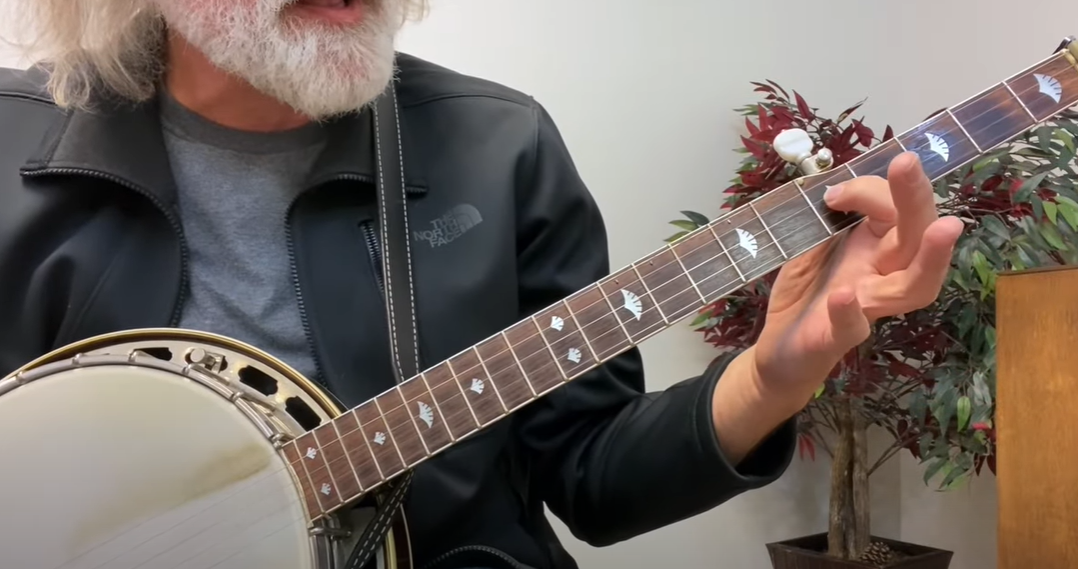
The banjo is a great instrument for beginners, as it has a relatively simple construction compared to other stringed instruments like the guitar or mandolin. It’s also fairly portable, so it’s easy to take with you wherever you go. If you’re looking for an accessible way to learn how to play music, the banjo is a great choice.
The banjo has become increasingly popular in recent years, and there are a variety of models available to suit different styles of playing. From traditional folk instruments to modern electric banjos, there’s sure to be an instrument that’s perfect for your needs. If you’re looking to buy a banjo, it’s important to do some research before you make your purchase.
Think about the style of music you want to play, as well as the size and weight of the instrument. Different models will have different features, so it’s important to find one that suits your needs. There are also a variety of accessories available, such as cases, straps and picks, which can help make playing easier and more enjoyable [1].
The Anatomy of a 5-String Banjo
The peghead
The peghead, also known as the headstock, is the uppermost part of a banjo’s neck. It plays a crucial role in holding the tuning pegs securely, ensuring the strings stay in tune. Additionally, the peghead typically features an indentation at the top, where the fingerboard seamlessly transitions, facilitating smooth playability. To aid in navigation along the fretboard, fret markers are often present, providing visual cues for musicians. Moreover, some pegheads showcase intricate decorative inlays, adding an artistic touch to the banjo’s overall aesthetic.

The fingerboard
The fingerboard, an essential component of a musical instrument, can be crafted from exquisite materials such as rosewood or ebony. To enhance its beauty and protect it from wear, a delicate layer of lacquer is often applied. Along the fingerboard, fret markers serve as guideposts for players, aiding in navigation across the neck. These markers, commonly in the form of dots or decorative symbols, are thoughtfully positioned at each fret position, creating a harmonious blend of aesthetics and functionality.
The nut
The nut, a small but crucial component of a guitar, is positioned at the upper end of the neck, specifically below the peghead. Typically crafted from materials like plastic or bone, its primary function is to facilitate the smooth transition of the strings from the tuning pegs to the fretboard. By providing stability and alignment, the nut plays a vital role in maintaining proper string spacing and tension, ultimately contributing to the instrument’s overall playability and tone.
The bridge
The bridge, a vital component of the banjo, sits delicately atop the banjo’s head. Its primary function is to efficiently transmit the vibrant vibrations produced by each string to the resonating head, amplifying the unique tone of the instrument. Crafted meticulously from either wood or synthetic materials, the bridge may also feature adjustable attributes, allowing musicians to fine-tune and modify the sound of their cherished banjo to their desired preference.
The tailpiece
The tailpiece, a small but essential component of the banjo, is typically crafted from metal or plastic. Positioned at the base of the banjo’s neck, its primary function is to secure and maintain the correct tension of the strings. Beyond its role in string stability, the tailpiece also plays a crucial role in enhancing the banjo’s sound. By efficiently transferring vibrations from the bridge, it contributes to the creation of a rich, resonant tone that fills the air with its captivating timbre. With its multifaceted purpose, the tailpiece serves as a vital element in the overall construction and performance of the banjo, ensuring that every note rings out with clarity and brilliance.
The head
The head of the banjo, also known as the banjo head, plays a crucial role in the instrument’s sound production. It is a circular piece made of either plastic or animal skin, carefully stretched and secured over the wooden hoop located at the bottom of the neck. This component acts as a resonator, amplifying and projecting the vibrations produced by the strings when they are plucked or strummed.
The banjo head is not just a passive element; it can be fine-tuned to adjust the tone and volume of the instrument. By tightening or loosening the head, musicians can achieve different characteristics in their banjo’s sound. This versatility allows players to explore various styles, from bright and crisp tones to warm and mellow ones, making the banjo a versatile and expressive musical instrument.
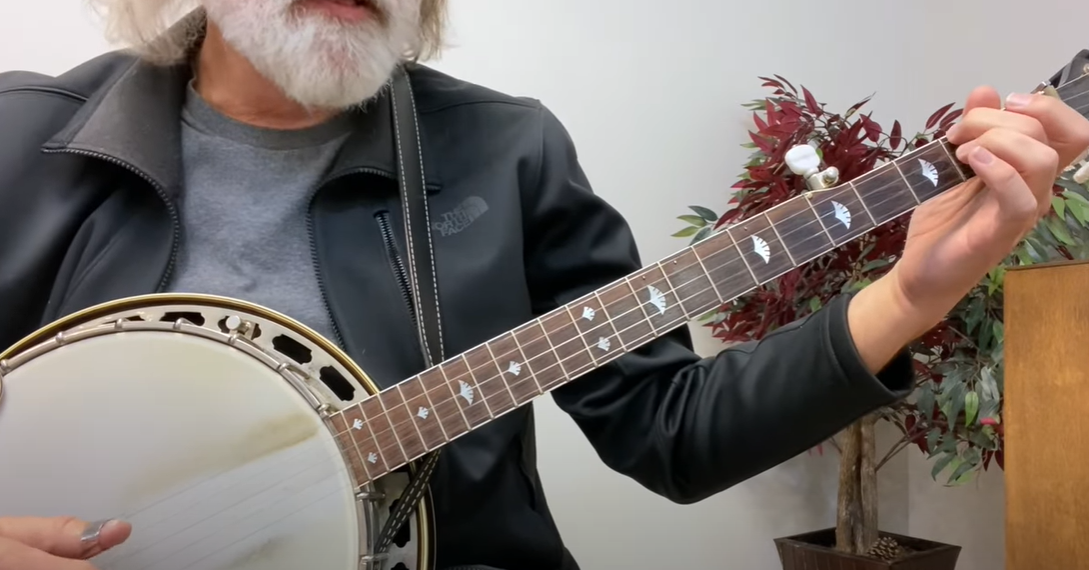
The fretboard
Frets, those raised metal pieces that run along the length of the fingerboard, are an integral part of the guitar. They not only contribute to the aesthetics of the instrument but also play a crucial role in enhancing playability. By dividing the fingerboard into precise segments, frets enable guitarists to achieve accurate intonation while playing chords and notes.
Moreover, frets provide a convenient reference for navigating the neck of the guitar. Equipped with fret markers, typically in the form of dots or other decorative symbols, players can effortlessly find their way around the fingerboard. These markers are strategically placed at each fret position, serving as helpful guides to ensure accurate finger placement and smooth transitions between different frets. So, frets and their accompanying fret markers are not just functional components, but also invaluable tools that aid guitarists in unleashing their musical potential.
The neck
The neck of the banjo, also known as the fingerboard, is a long and slender piece of wood that serves as the vital connection between the peghead and the body of the instrument. Not only does it provide structural support, but it also plays a crucial role in determining the playability and sound of the banjo.
The shape of the neck plays a significant role in the overall experience of playing the banjo. A slimmer neck profile may provide faster and more agile finger movements, ideal for intricate picking and chord changes. On the other hand, a thicker neck may offer a fuller and warmer tone, enhancing the instrument’s overall sound projection.
The strings
Banjos come in various models, typically equipped with either five or six strings. These strings, crafted from either steel or nylon, extend from the tuning pegs located at the peghead, all the way down to the bridge positioned at the end of the neck. With the ability to be tuned to a wide range of pitches, these strings offer the versatility to produce an array of distinct sounds, allowing musicians to explore a multitude of musical possibilities.
The tone ring
The tone ring, an essential component of a banjo, is a metal ring that encircles the banjo’s head, serving to enhance and amplify its sound. Typically crafted from brass, this versatile ring can be adjusted to fine-tune the sound and volume of the instrument, allowing musicians to achieve their desired tonal qualities. The choice of tone ring used on a banjo greatly influences not only its unique sound but also its playability, making it a pivotal factor to consider for banjo enthusiasts and players alike [2].
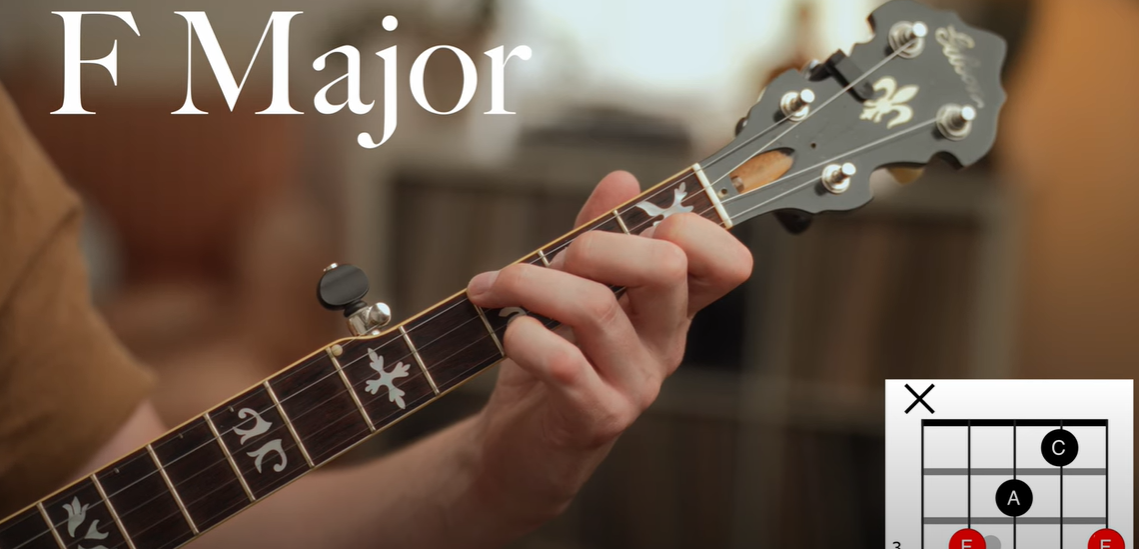
How many types of Banjo are there?
Banjos come in a variety of shapes, sizes and styles. The most common types are the 4-string tenor banjo, 5-string banjo, 6-string banjo (also known as the guitar banjo) and the 8-string banjo. While these four are the most popular types of banjos you can find today, there are many more varieties including long-neck banjos, mini-banjos, and kit banjos.
Each of these styles has its own unique characteristics that make them well-suited for different genres and playing techniques. The classic 4-string tenor is often used in traditional Irish music, bluegrass, old-timey music and jazz. It has a shorter neck and produces a bright, high-pitched sound. The 5-string banjo is most commonly seen in bluegrass music and has an extra string tuned differently than the 4-string model.
The 6-string guitar banjo is the newest type of banjo and it’s gaining popularity among more modern players. It has a longer scale length like an electric guitar and produces a more mellow sound. Finally, the 8-string banjo is similar to the 4-string model except it has two extra strings tuned in unison which gives it a fuller sound.
No matter what type of banjo you choose, they are all versatile instruments that can be used for many different types of music. With its vibrant sound and unique construction, the banjo has become an iconic instrument for many genres. So if you’re looking to add a new stringed instrument to your arsenal, it might just be time to pick up a banjo [3]!
Easy songs for banjo beginners
Clinch Mountain Backstep
The Clinch Mountain Backstep is a great song for beginners to learn on the banjo. It’s easy to follow and has a nice, relaxed feel. The chords used in the song are G, C, D and A7 – all of which are common enough that it shouldn’t be too difficult for a beginner to find them without having to look up tablature.
The song also features a few nice licks and runs that can be used to spice up the song, such as the “Clinch Mountain Slide” (which is played with hammer-ons and pull-offs). This is a great way to practice techniques like slides, hammer-ons and pull-offs without having to worry about getting overwhelmed by complicated playing.
Cripple Creek
Another great song for banjo beginners is Cripple Creek. It has a nice, upbeat tempo and uses easy chords that most beginners should be able to pick up on quickly. The main chord progression in the song is G, D, A7 and C – which again are fairly common chords.
The song also features some nice runs and licks that are easy for beginners to master. The main lick in the song is a triplet roll (which is simply three notes played quickly) which adds an extra layer of complexity to the song without being too complex for beginner players.
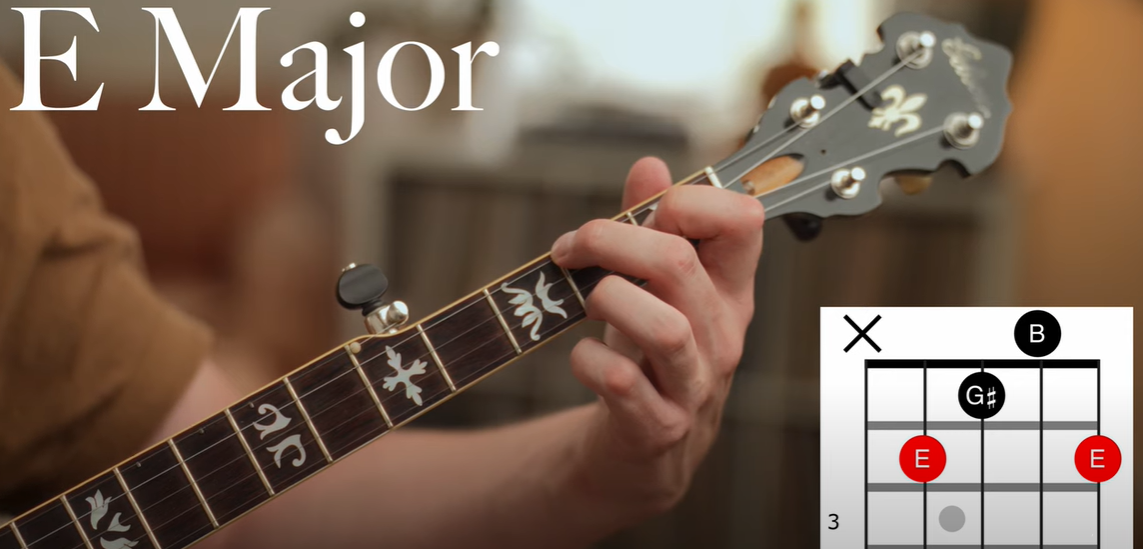
You Are My Sunshine
You Are My Sunshine is a classic song that has been played on the banjo for generations. It’s easy to play and uses simple chords such as G, D, C and A7 – all of which should be fairly familiar to most beginner players. The song also features some nice licks and runs which can be used to add a bit of complexity without overwhelming the player.
The song also has a great, uplifting feel which makes it perfect for those times when you just need something to cheer you up. It’s definitely worth learning for any beginner and will give them a good sense of accomplishment when they can confidently play the full song without any mistakes.
The Ballad Of Jed Clampett
The Ballad Of Jed Clampett is another classic banjo song that beginners should definitely learn. It uses easy chords such as G, D and A7 which are fairly common in many songs. The song also features some nice runs and licks that can add a bit of complexity without being overwhelming for beginner players.
The story behind the song is also quite interesting and adds an extra layer of depth to the song. The lyrics tell the story of Jed Clampett, a poor farmer who strikes it rich and moves to Beverly Hills – something that many people can relate to!
Foggy Mountain Breakdown
Foggy Mountain Breakdown is considered by many to be one of the best banjo songs ever written. It’s an incredibly complex song, but it can be broken down into manageable chunks which are perfect for beginners. The main chords used in the song are G, D, A7 and C – all of which should be familiar to most beginner players.
The song also features some nice licks and runs which can add a lot of complexity to the song without being too overwhelming for beginner players. It’s definitely worth learning and can provide a great sense of accomplishment once it is mastered.
Cuckoo’s Nest
Cuckoo’s Nest is another great song for banjo beginners to learn. It features easy chords such as G, D, A7 and C which will be familiar to most beginner players. The song also includes some nice licks and runs which can add a bit of complexity without becoming too overwhelming.
The song has a great, upbeat feel to it which makes it perfect for those times when you just need something light and cheerful to play. It’s definitely worth learning for beginner players and can provide a good sense of accomplishment when they have mastered the full song.
Ground Speed
Ground Speed is another great song for banjo beginners. It’s easy to follow and features common chords such as G, D, A7 and C which should be familiar to most players. The song also includes some nice licks and runs which add a bit of complexity without being too challenging for beginner players.
The song has a relaxed feel to it which makes it perfect for those times when you just want to kick back and relax while playing the banjo. It’s worth learning and can provide a great sense of accomplishment once it is mastered.
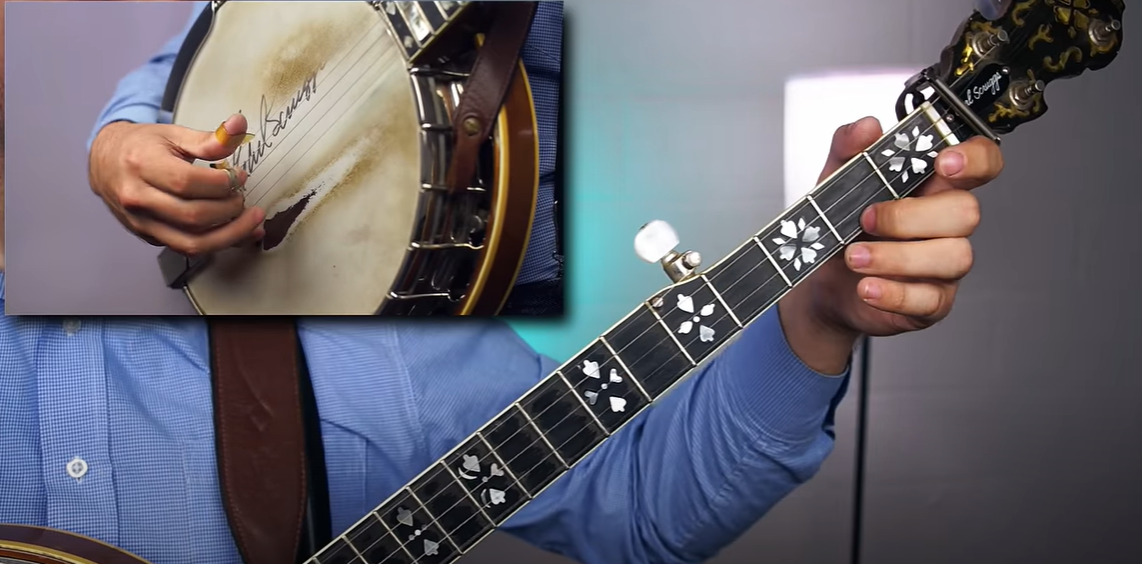
I’ll Fly Away
I’ll Fly Away is a classic gospel song that has been played on the banjo for generations. It’s got a great, uplifting feel to it and uses easy chords like G, D, A7 and C – all of which should be familiar to most beginners. The song also features some nice licks and runs that can add an extra layer of complexity without becoming too challenging for beginner players.
The song is a great one to learn as it has a lot of emotional depth to it – something that can really help inspire and motivate beginner players as they progress through their learning journey. It’s definitely worth learning and will provide a real sense of accomplishment once mastered.
Nine Pound Hammer
Nine Pound Hammer is a great song to learn for banjo beginners. It uses easy chords such as G, D, A7 and C which should be familiar to most players. The song also includes some nice licks and runs that can add an extra layer of complexity without becoming too overwhelming for beginner players.
The song has a relaxed feel to it which makes it perfect for those times when you just want to kick back and enjoy playing the banjo. It’s definitely worth learning and can provide a great sense of accomplishment once it is mastered [3].
FAQ
What is the easiest banjo to play?
The easiest banjo to play depends on the player’s skill level and preferences. Beginners may find five-string banjos easier to learn than four-string models, as they have a simpler string layout. Generally, open-back banjos are less expensive and lighter in weight, making them an ideal choice for beginning players. Moreover, some beginner banjos come with helpful accessories such as tuners, picks and plectrums. For those who would like to dive deeper into playing the banjo, four-string models are a great option to explore other musical genres. As with any instrument, practice makes perfect and most players find that their skills improve over time.
What is clawhammer style?
Clawhammer style is a unique way of playing the banjo that originated in Appalachia. The player strums downwards with their index or middle finger while keeping their thumb stationary. Clawhammer style can be used to play old-time, folk and traditional music, and it produces a distinctive sound that sets it apart from other banjo styles. Additionally, there are various clawhammer techniques that players can use to produce different sounds. With practice, it is possible to learn how to incorporate these techniques into songs and create unique tunes.
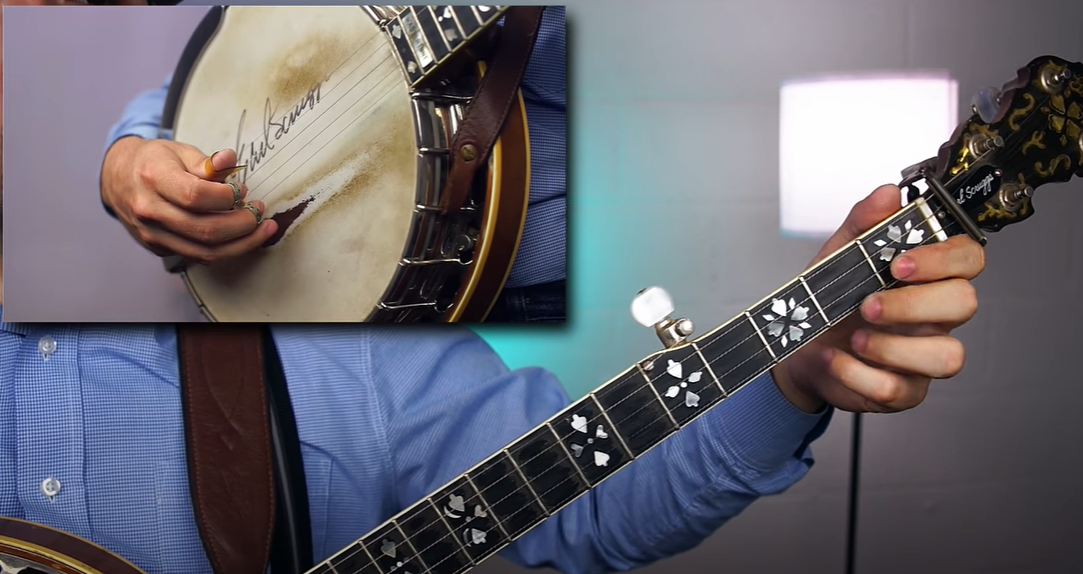
Do I need a strap for my banjo?
A strap is not necessary when playing the banjo, but many players find that straps help them keep their instrument in place while they are playing. Straps come in different sizes and materials, so it is important to choose one that fits comfortably and securely. For beginners, choosing an adjustable strap will allow them to adjust the length as their playing style develops.
How do I tune my banjo?
Tuning a banjo can be tricky at first, but it is something that all players must learn to do. For five-string banjos, the fifth string should be tuned to the A note (220Hz). The remaining strings are normally tuned to G, D, B and E respectively. Lastly, it is important to make sure that all of the strings are in tune with each other by using an electronic tuner or tuning manually. With practice, players will become familiar with tuning their banjo and be able to do it without any external help.
Do I need special strings for my banjo?
The strings on a banjo are an important part of the instrument’s sound, so it is recommended that players use strings specifically designed for their particular model of banjo. There are various types of strings available, and players should take some time to experiment and find the ones that fit their needs. It is also important to regularly change strings to ensure a quality sound over time.
Are banjos easy to learn?
Banjos are not the easiest instrument to learn, but with practice and dedication, they can be mastered. For those just starting out, it is important to find a banjo that suits their skill level and invest in some quality instructional materials. Additionally, lessons from an experienced teacher or mentor can be invaluable for those looking to become proficient players. With time and effort, players of all skill levels can develop their banjo playing skills.
What type of music can I play on a banjo?
The banjo is a versatile instrument that is used to play a variety of musical styles. It has its roots in traditional and folk music, but it can be adapted to genres such as jazz, bluegrass, country and rock. Additionally, modern players have found new and creative ways to incorporate the banjo into their own unique styles. The possibilities are endless, so it is up to the individual player to explore what type of music they can create with a banjo.
Useful Video: Learn this Simple Melodic Lick. – Bluegrass Banjo
Conclusion Paragraph
So, this guide has presented some easy banjo songs for beginners. Each song was chosen for its combination of ease and charm so that anyone could pick up the banjo and be able to play a great-sounding tune. Every beginning banjo player should feel confident in their ability to master one or more of these beautiful songs. Whether you’re just starting on the instrument or looking for a new piece to add to your repertoire, these songs will provide a great launchpad for your musical journey. Good luck, and have fun!
References:
- https://www.musicalexpert.org/what-is-a-banjo.htm
- https://www.stringvibe.com/banjo-components/
- https://www.stringvibe.com/types-of-banjos/
- https://www.roadiemusic.com/blog/easy-banjo-songs-for-beginners/




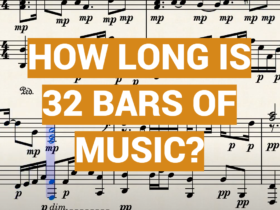
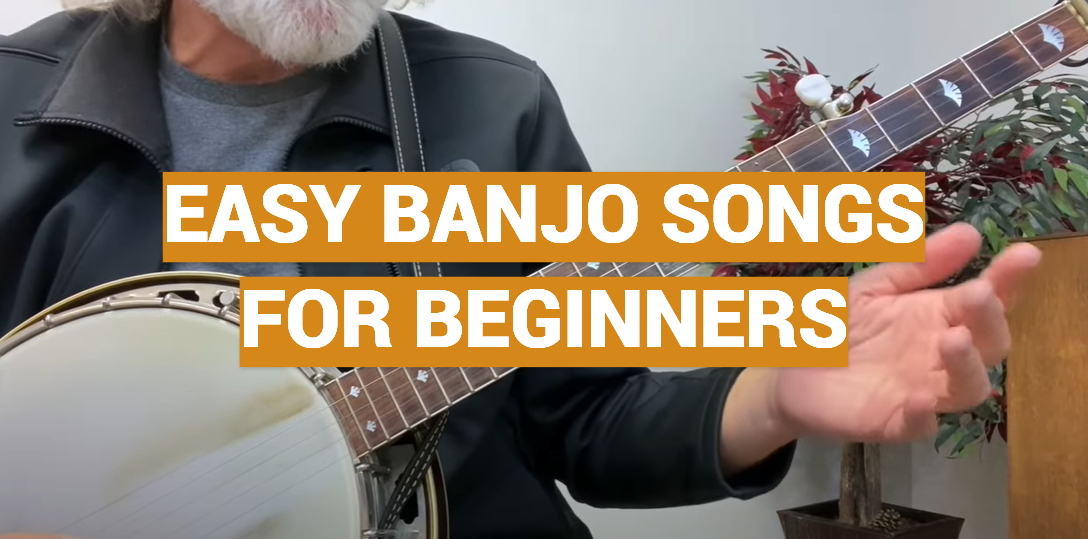




Leave a Reply